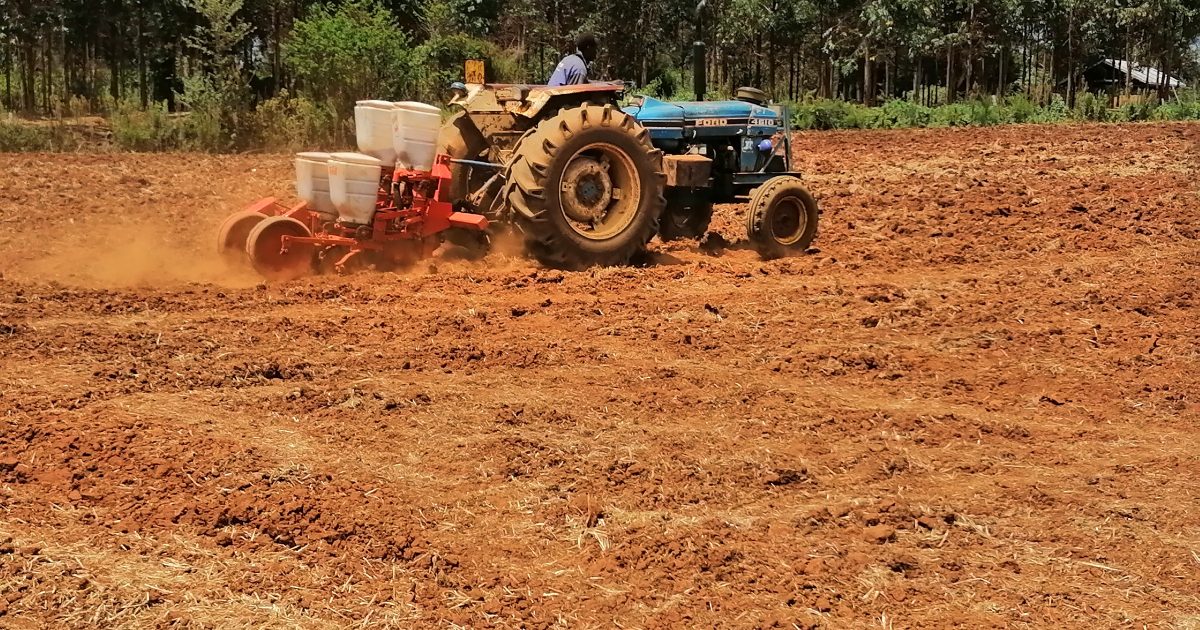The weatherman has advised farmers in Nyeri County to continue preparing their farms for planting, even as the country stares at a possibility of delayed long rains.
Last month, the Meteorological Services Department had announced that long rains would commence towards the end of March and had advised farmers to prepare their lands for the planting season.
The weather report had also said the long rains for this year, were expected to run from mid-March to May 2022.
According to the report, Nyeri which lies within Highlands West of Rift Valley is expected to receive enhanced rainfall of between 401 milliliters to 500 milliliters.
However, Nyeri County Director of Meteorological Services Peter Macharia is now warning the much-awaited rains may delay due to changes in weather patterns.
“The rainy season seems to have shifted a bit and we are about to issue a statement soon to that effect. But the truth of the matter is that the rains will slightly delay, but will not fail in total,” he said.
A Five-day weather outlook covering the period between April 9 to 13 indicates that Nyeri County will experience slight showers, with temperatures expected to range between highs of 30 degrees Centigrade and lowest of six degrees centigrade.
To mitigate the possibility of failed harvest, Macharia has now advised farmers to integrate the planting of fast maturing crops such as cassava and sweet potatoes alongside maize and beans.
“We are advising our farmers to continue planting since this is the right time to do so and therefore there is no need to panic owing to the lateness of the rains. However, farmers also need to be advised on the importance of planting drought resistant crops such as cassava and sweet potatoes in their farms to ensure they don’t score badly in the event the unforeseen happens,” he advised.
Mary Wachira, a resident of Gatitu village in Nyeri central sub county however says she is going on with planting and is not worried by the delayed rains.
Wachira, who took up mixed farming in her 17-acre farm after losing her job at the now defunct East Africa Airways says she has already prepared her land ready for planting sunflower and maize seeds.
“There is a challenge with the rains, but I don’t think we are behind schedule since this is the time we do our planting. Rain may be a bit late, but this is not something to be worried about. Traditionally, the long rains commence between April 15 and April 22 and therefore we need not to panic since we are still within the right time,” she said.
The Department of Meteorological Services has already been urged to liaise with agricultural extension officers for appropriate advice on best farm practices.
“Farmers are advised to take advantage of the expected rains and maximize on crop yield through farm land-use management practices. The Ministry of Environment and Forestry should encourage residents to continue planting trees including indigenous and fruit trees in order to increase tree and forest cover and conserve the environment. The March-April-May season, being the major rainfall season in Kenya, will provide enough moisture to sustain tree growth in the areas expected to receive enhanced rainfall,” reads part of a recent report by Director of Meteorological Services Stella Aura.
According to the UN Office for the Coordination of Humanitarian Affairs (OCHA), three consecutive failed rainy seasons in the Arid and Semi-Arid Lands (ASAL) of Kenya have exhausted families’ coping capacities and left more than 2.9 million people in dire need of humanitarian assistance.
By late last year, some areas of coastal and south-eastern Kenya reported their worst rainfall performance since 1981.
The worsening drought has significantly hindered crop production and led to loss of livestock, leaving nearly 2.4 million people in the ASAL region struggling to put food on their table every day, including around 368,000 people in emergency levels of hunger and over 523,000 children under the age of 5 in urgent need of treatment for acute malnutrition.
Water sources for both people and livestock have dried up, forcing families to trek for longer distances and causing tensions among communities, spilling into an increase in inter-communal conflict.
By Samuel Maina




